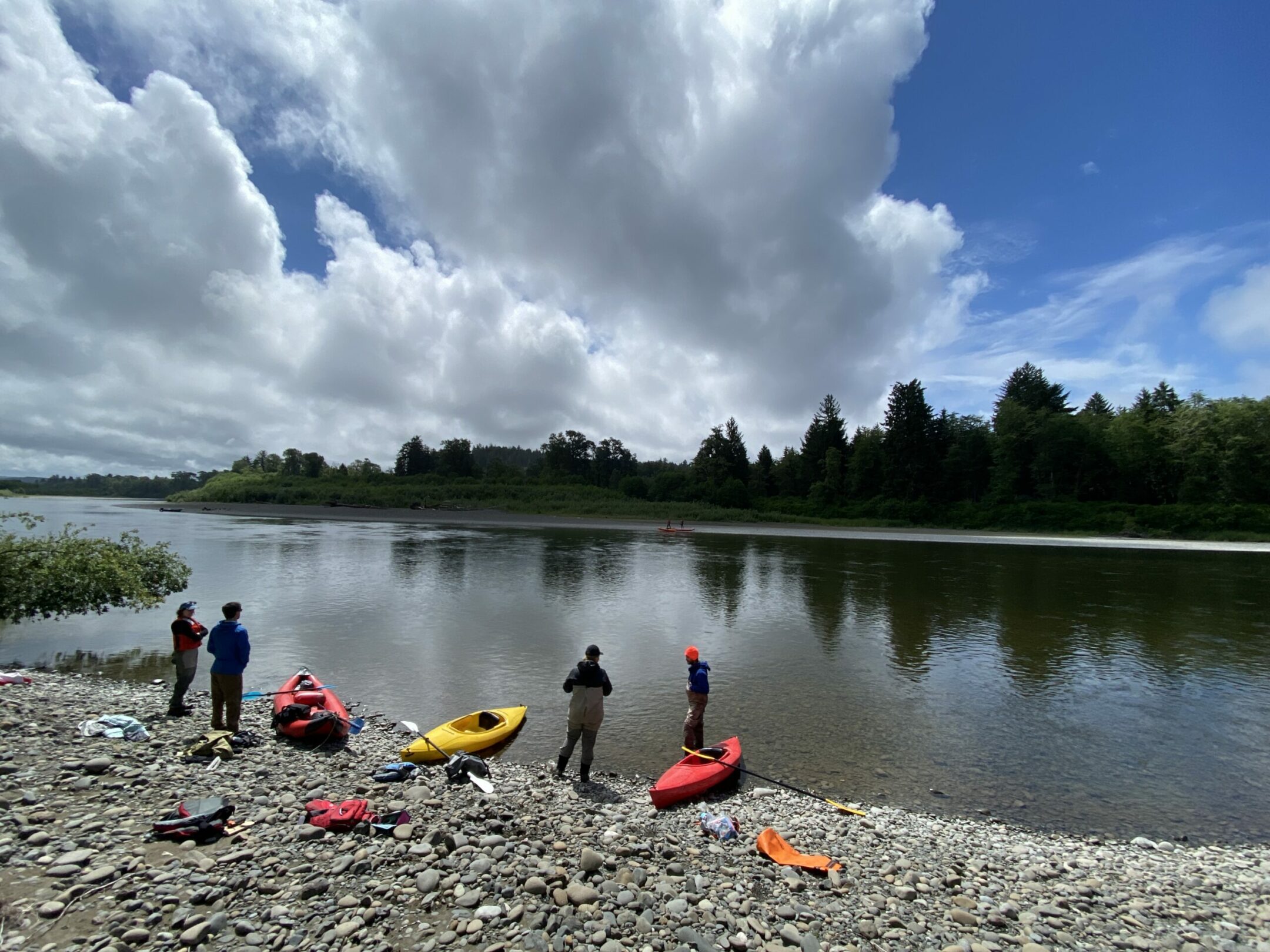Cold water is critical for fish, but getting good data is harder than you think. On the Olympic Peninsula, the Quileute Tribe is leading the way.
In July, Nicole Rasmussen paddled the Quillayute River in a kayak, clocking the fishing boats and swimmers. She and teammate Caroline Walls were looking for just the right spot, away from the action, in the rushing water beneath their boats.
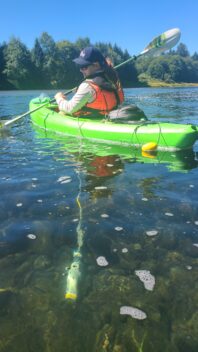
Rasmussen and Walls—Water Quality and Habitat Restoration Biologists, respectively, for the Quileute Tribe—had an intricate set-up to install in this wild Olympic Peninsula river. They stacked multiple water sensors in the riverbed to monitor temperatures and exchanges between ground and surface water. Other sensors they suspended in the water column itself, both in deep pools and in faster-moving water. Some were tethered to cables from the river banks, others floated, and still others were attached to buried cords and hid inside logjams, safe from human disturbance.
“It’s hard to work from a kayak in a tidally-influenced river,” Rasmussen says. “We got rolled a few times.”
Rasmussen has been a Quileute Tribe biologist for ten years; enough time to see shifts in the river that sustains this coastal salmon community. Some are literal. In the Quillayute’s upper reaches, its once-meandering path is straightening, creating high-energy erosion downstream. That means that one winter high-flow event might be all the river needs to jump its banks and flood the Tribal village of La Push: a threat that’s prompted an ambitious restoration campaign.
Meanwhile, the Quillayute’s ten salmon runs—particularly Chinook and steelhead—are well below their historical baselines for abundance: a heartbreaking trend across coastal Washington, one stemming from factors that include fish passage barriers, failing roadways, the loss of large wood in rivers, and changing climate and ocean conditions.
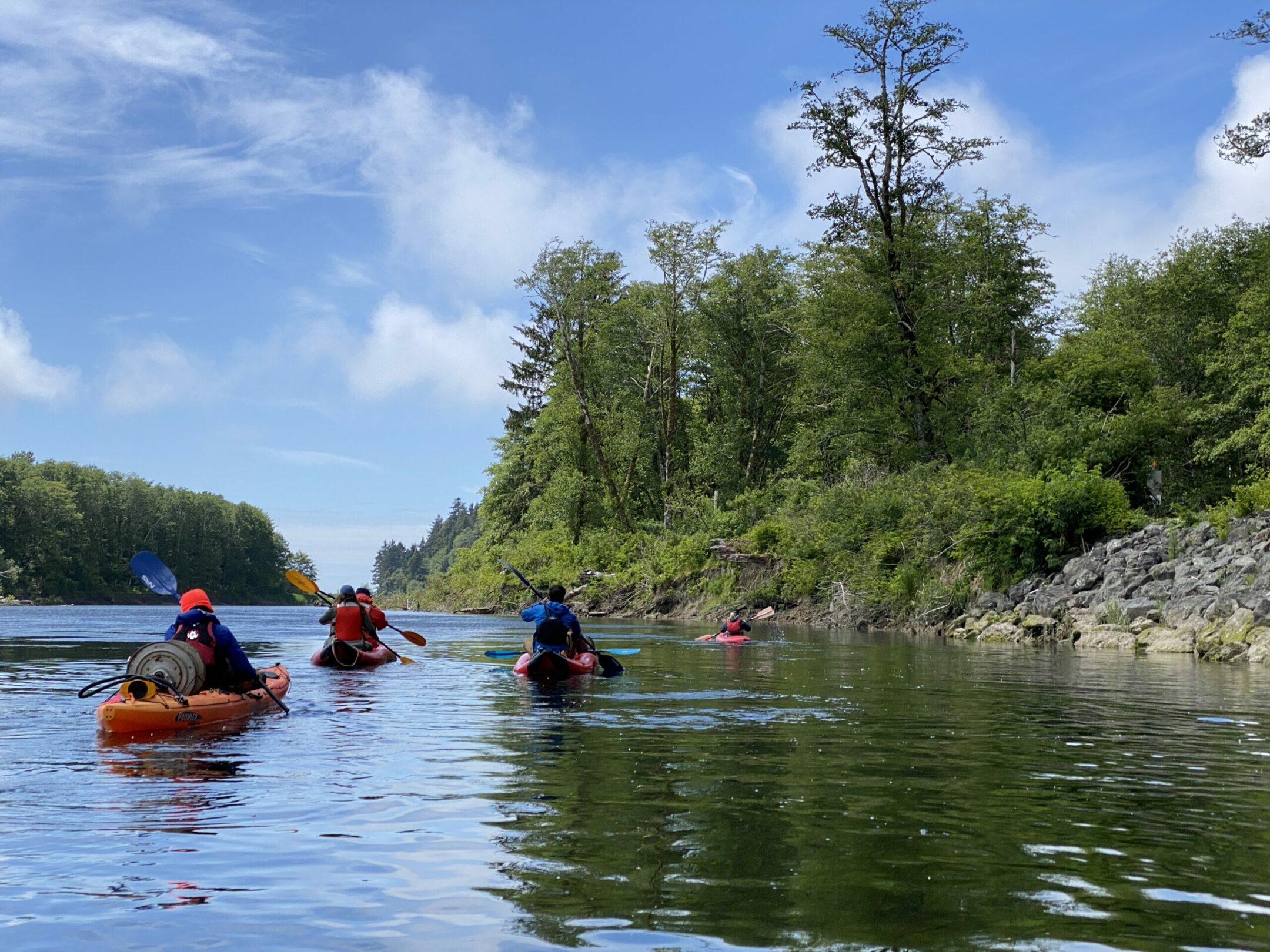
She’s also seen the river’s temperatures tick up over the years. As a key indicator of the health of the river, that’s further bad news for salmon. Both fish health and reproductive success are negatively impacted by heat spikes and long-term warming.
“We know that anything above 22 degrees Celsius is lethal for salmon,” she says, noting that one water temperature check after June’s historic heat dome clocked 23 degrees Celsius (about 73 degrees Fahrenheit). “You could tell from the kayak, just by putting your hand in the river, that things weren’t good. The water was as warm as a pool.”
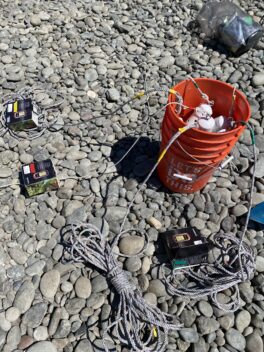
According to Rasmussen, it’s one thing to take a river’s temperature on a single hot summer day. It’s another thing to know how—and where—river temperatures are changing over time.
You need long-term water temperature data, Rasmussen says, to know whether a restoration project—like an engineered logjam—is actually working to reduce warm water impacts. It’s data that can help pinpoint the best location for that logjam in the first place. And it can help biologists like Rasmussen and Walls identify where a river is already benefiting from natural cold-water inputs from tributaries, springs, or groundwater upwellings: places high on their list for habitat conservation.
“You have to know where your cold water is,” says Rasmussen. “If you don’t know that, you don’t know where in the river to target your efforts. Where you can work to enhance that cold water habitat for fish.”
What Rasmussen and Walls are doing on the Quillayute River is groundbreaking, says Wild Salmon Center Salmon Habitat Specialist Betsy Krier. (Wild Salmon Center, along with the US Geological Survey and Coast Salmon Partnership, are aiding parts of this project through field assistance and funding grants, including support from the Wallace Research Foundation.) Along much of the Washington Coast, river temperature data is spotty—in part due to the labor-intensive nature of sensor installation, and in part due to the limited funds to support such work by Tribal governments and local municipalities. According to Krier, there’s little time to waste in filling this data gap.
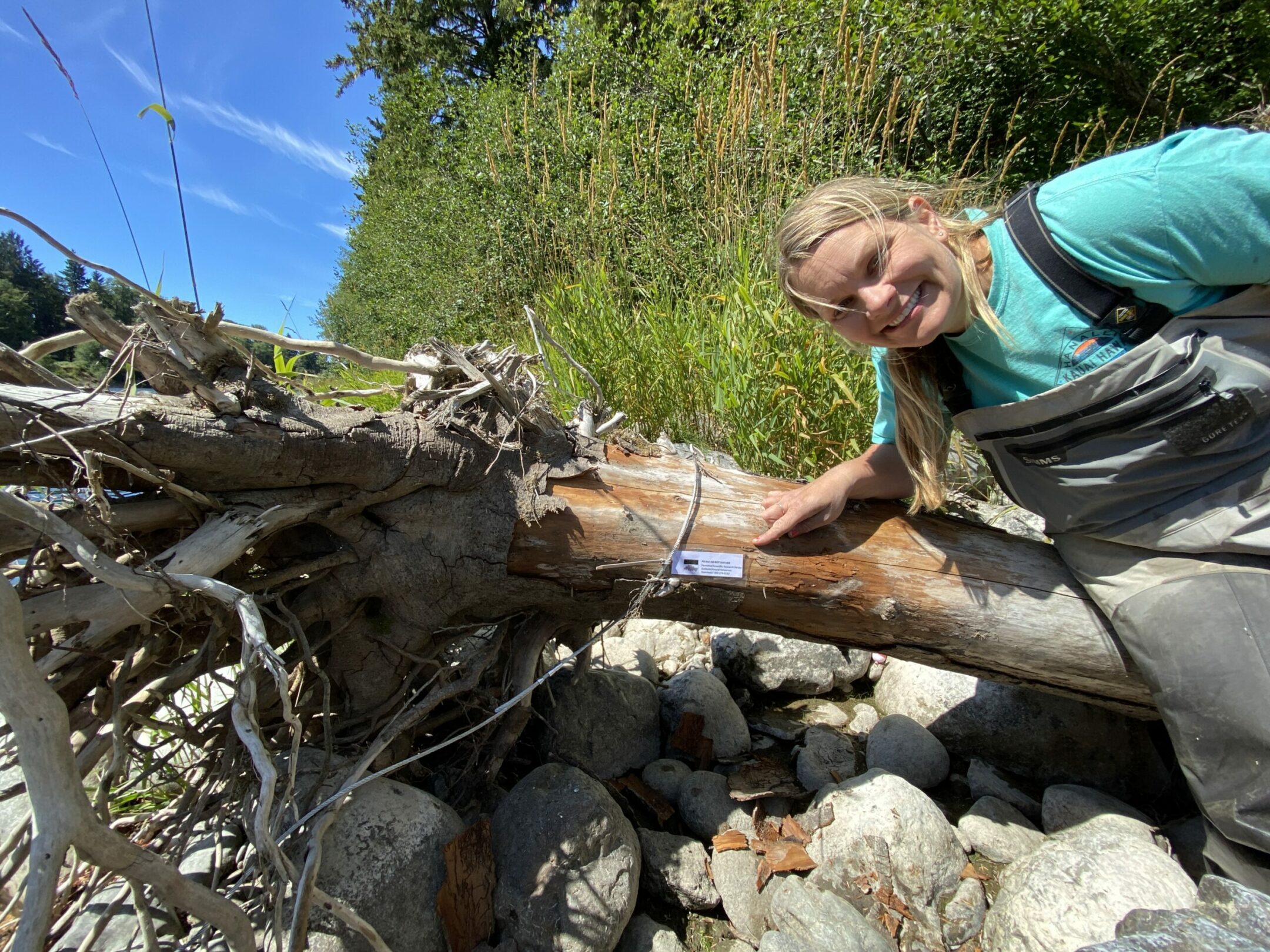
“We already know that the Olympic Peninsula is going to be one of the last, best places for salmon and steelhead in the Pacific Northwest,” says Krier. “We absolutely need solid temperature data to make sure we’re paying attention to the right trends. Nicole and the Quileute Tribe are approaching this work with a level of precision and motivation that shows what’s possible in watersheds up and down the Washington Coast.”
“We absolutely need solid temperature data to make sure we’re paying attention to the right trends,” Krier says. “Nicole and the Quileute Tribe are showing what’s possible in watersheds up and down the Washington Coast.”
The Quileute Tribe has ample reason to want to get this work right, Rasmussen says. The Tribe’s small, low-elevation reservation is hemmed in by the Pacific Ocean and Olympic National Park. As such, the Quileute are keenly aware of what climate change could mean for their lands—threats ranging from floods and landslides to hot, salmon-killing water.
“Most people just do the restoration work,” she says. “But the Quileute Tribe wants to know without a doubt that these big projects are working. We need to make sure that the restoration work we undertake can really change things for the fish and the community.”
“Most people just do the restoration work,” Rasmussen says. “But the Quileute Tribe wants to know without a doubt that these big projects are working.”
That’s why they’ll be back in their kayaks next summer—and for seasons after that—battling tidal currents to reinstall sensors in the exact same places.
For Rasmussen, Walls, the Quileute Tribe, and supporters like Krier, having this data will allow them to pinpoint where and when conservation actions on the river help to break the Quillayute’s seasonal fevers.
And that, Rasmussen says, would indeed be very cool.
